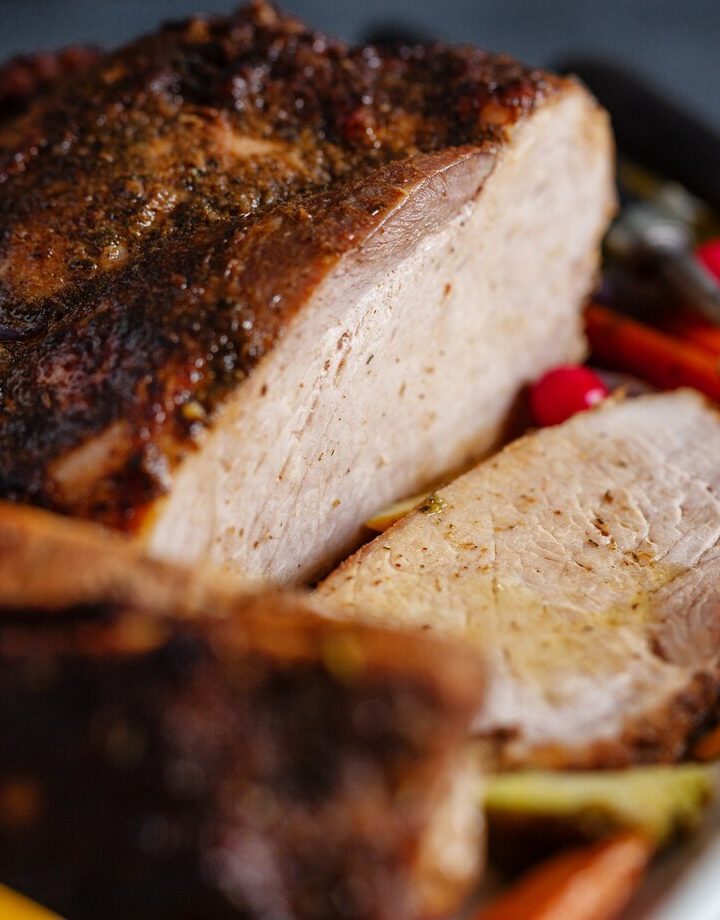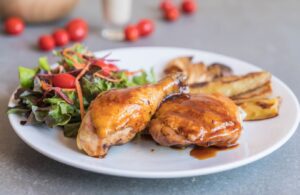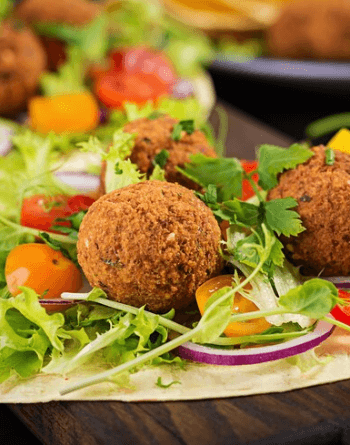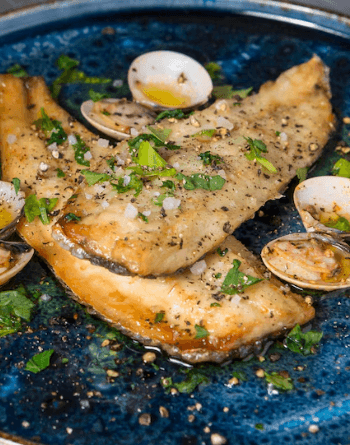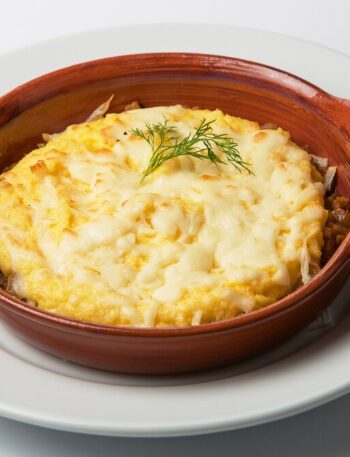The Carnivore Diet Recipes is a nutritional approach that emphasizes consuming exclusively animal-based foods—meat, eggs, and animal fats—while eliminating all plant-based products. Proponents claim that this zero-carb, high-protein diet leads to benefits like weight loss, reduced inflammation, and improved mental clarity.
While the diet may seem restrictive, there’s a plethora of creative and tasty carnivore diet recipes to enjoy daily.
According to a comprehensive guide by Healthline, the carnivore diet excludes all carbs and plant-based foods, drawing inspiration from ancestral eating practices. For those seeking a variety of meal ideas, Carnivore.Diet offers an extensive collection of carnivore recipes ranging from organ meats to grilled classics.
Understanding the Carnivore Diet Recipes
The carnivore diet, often termed the zero-carb diet, is based entirely on animal products. While similar to ketogenic diets, the carnivore approach excludes vegetables, fruits, nuts, and even herbs and spices.
Allowed Foods:
Red meats: beef, lamb, bison
White meats: chicken, duck
Eggs, animal fats, and bone broth
Organ meats such as liver, kidney, and heart
Dairy (optional and if well-tolerated): butter, cheese, heavy cream
Foods to Avoid: Carnivore Diet Recipes
All plant-based products (fruits, vegetables, grains, legumes)
Processed foods or sugars
Herbs, spices, and condiments with plant-derived ingredients
Benefits of the Carnivore Diet Recipes
Many individuals adopt the carnivore diet for its potential health benefits. Commonly reported advantages include:
Weight loss due to appetite regulation and insulin sensitivity
Improved digestion and reduced bloating from eliminating fiber
Reduced inflammation and joint pain
Enhanced mental clarity and stable energy levels
A study referenced by WebMD suggests that some individuals experience improvements in body mass index (BMI), energy levels, and mental focus when following a carnivore diet.
Risks and Considerations
Like any restrictive diet, the carnivore diet may not be suitable for everyone. Potential risks include:
Nutrient deficiencies (e.g., vitamin C, magnesium, fiber)
Elevated cholesterol levels in some individuals
Potential for dietary monotony
Lack of long-term clinical research
check out our Smoker Recipes: Easy & Flavorful BBQ Ideas for Meat, Seafood… for balance and insight.
Essential Carnivore Diet Recipes Ingredients
To build successful meals on this plan, focus on the following staples:
Meats: Ribeye steak, ground beef, pork chops, chicken thighs, duck breast
Organ meats: Liver, heart, kidney, bone marrow
Eggs: Whole eggs, egg yolks, hard-boiled eggs
Animal fats: Tallow, lard, duck fat, butter
Optional dairy: Cheese (aged and full-fat), heavy cream, ghee

Carnivore Diet Recipes for Every Meal
Below are example carnivore diet recipes you can rotate throughout the week. These meal ideas offer maximum satisfaction, nutrient density, and easy preparation using only animal-based ingredients.
Whether you’re cooking for one or meal prepping for the week, these dishes are designed to support a zero-carb lifestyle without compromising on flavor or texture.
Breakfast Recipes: Carnivore Diet Recipes
A nourishing carnivore breakfast should be high in protein and fat to keep you satiated for hours. Try these simple and satisfying morning options:
Liver and Eggs
Pan-seared beef liver for iron and vitamin A
Fried eggs in beef tallow or butter
Optional sea salt (for non-strict carnivores)
Bacon & Cheese Omelet: Carnivore Diet Recipes
3 whole eggs
4 slices of crispy meat-based bacon (beef or turkey)
¼ cup shredded cheddar cheese (if dairy is tolerated)
Roasted Meat Belly Slices
Thick-cut meat belly (such as beef belly or lamb breast)
Oven-roasted until crisp
Season with salt or drizzle with bone broth
Carnivore Custard
4 egg yolks
1 cup heavy cream
Whisk thoroughly and bake in ramekins at 325°F for 20 minutes
If you’re looking for more variety beyond meat-based options, explore our No-Carb Breakfast Recipes: Delicious and Nutritious for additional inspiration.
Lunch Recipes: Carnivore Diet Recipes
Carnivore lunches are best when quick, high-fat, and cooked in bulk. These options are flavorful and perfect for midday energy without a crash.
Grilled Ribeye Steak
Seasoned with salt only
Grilled to medium-rare
Finished with a drizzle of beef tallow
Ground Beef Patties with Egg Yolk
Two 80/20 beef patties
Topped with a raw or soft-cooked egg yolk
Optional cheddar cheese or butter for added fat
Chicken Thighs in Duck Fat: Carnivore Diet Recipes
Bone-in, skin-on chicken thighs
Roasted or pan-seared in duck fat until crispy
Delicious served alone or with a broth-based reduction
Lamb Chops with Bone Broth Reduction
Seared lamb chops
Glazed with concentrated bone broth and a touch of ghee
Dinner Recipes: Carnivore Diet Recipes
End your day with a hearty, slow-cooked or pan-seared carnivore dinner that supports recovery, satiety, and micronutrient intake.
Slow-Cooked Chuck Roast
2-3 lb chuck roast
Sear all sides in tallow before slow-cooking for 6–8 hours
Add marrow bones or broth for extra collagen
Pan-Seared Duck Breast
Skin-on duck breast
Score the skin and render down the fat until crisp
Finish in the oven or in the pan with more duck fat
Beef Heart and Marrow Mix: Carnivore Diet Recipes
Dice beef heart and sauté in bone marrow
Add seared skirt steak for texture and iron-rich variety
Roasted Meat Ribs in Tallow Glaze
Beef or lamb ribs (instead of pork)
Roasted until tender
Glazed with melted beef tallow and broiled for a crispy finish
Snacks and On-the-Go Ideas
For those busy days or post-workout bites, here are carnivore-approved snacks that travel well and fit your macros.
Beef jerky or dried steak slices (unsweetened, no marinades)
Hard-boiled eggs for protein and choline
Unseasoned meat rinds (like beef or lamb cracklings)
Cheese cubes if dairy is tolerated
Cold cuts such as roast beef, smoked turkey, or bison pastrami
We’ve also reviewed the Protein Milkshake Recipe – Best High-Protein & Delicious that can support your diet without added sugars or plant-based ingredients.
Carnivore Meal Planning Tips
Buy in bulk: Whole roasts and large meat packs are more economical.
Rotate meats: Variety helps ensure a range of micronutrients.
Prep in advance: Cook large portions and freeze individual meals.
Track intake: Monitor how your body reacts to different meats or organs.
For a detailed look at how we prepare meals for the week, visit our guide on Meal Prep Recipes – Easy & Healthy Meals for Your Busy Lifestyle.
Carnivore Diet Recipes Cooking Methods
One of the misconceptions about the carnivore diet is that it’s repetitive or bland. But in reality, your meals can be rich, juicy, and deeply satisfying—if cooked the right way. Mastering a few core cooking techniques will help you unlock more flavor, preserve nutrients, and create variety even with limited ingredients.
Here are the top methods to cook meat on a carnivore diet, each suited to different cuts and textures:
Grilling
Grilling is ideal for high-fat cuts like ribeye, lamb chops, and burgers. The open flame gives a smoky flavor and allows excess fat to render off, enhancing texture while keeping the inside juicy.
Tips:
Use high heat and flip only once.
Salt the meat just before cooking to prevent dryness.
Let rest before serving for optimal juiciness.
Grilling is one of the best methods for quick, high-protein meals with minimal cleanup—perfect for those following low carb meat recipes or zero-carb BBQ styles.
Searing
Searing creates a flavorful, golden-brown crust on meats like steak, beef liver, heart, and even pork chops. It’s particularly effective when paired with cast iron pans and animal fats like beef tallow or duck fat.
Tips:
Use a preheated cast iron skillet.
Add fat to the pan (tallow, lard, butter) for a crisp exterior.
Only sear a few minutes per side to lock in flavor.
This method is great for carnivores seeking fast cooking and deep flavor without long prep.
Slow Cooking
Perfect for roasts, brisket, oxtail, and other tough cuts, slow cooking breaks down connective tissue and infuses flavor over time. It’s ideal for meal prep or when feeding a family.
Tips:
Use broth, marrow, or rendered fat as a base.
Cook low and slow (6–10 hours).
Add bones or joints for extra collagen and minerals.
Slow-cooked carnivore meals are some of the most nourishing and satisfying, especially in colder months or when transitioning to the diet.
Sous-Vide
Sous-vide cooking involves vacuum-sealing meat and immersing it in a temperature-controlled water bath. This method offers precise temperature control and helps retain natural juices, vitamins, and amino acids.
Tips:
Finish with a hot sear after sous-vide for crust.
Perfect for delicate cuts like filet mignon, duck breast, or even organ meats.
Use butter or ghee in the bag for added richness.
Sous-vide is a go-to for those who want gourmet-quality meals that are nutrient-dense and cooked perfectly every time.
Oven Roasting
Ideal for pork belly, chicken thighs, ribs, and even beef short ribs, oven roasting allows for crisping, caramelization, and steady internal temperature control.
Tips:
Roast at a high temp first to crisp skin, then lower to finish.
Use a rack to allow fat to drip away.
Baste with animal fat or bone broth halfway through for moisture.
This method is great for making batch meals or entertaining guests while staying within your animal-based diet plan.
Pro Tip: For a delicious and functional cooking fat, use homemade tallow from beef trimmings or marrow bones—this enhances flavor and adds healthful saturated fats that support energy on the carnivore diet.

Frequently Asked Questions
Q: What meals can I make on a carnivore diet?
A: There are dozens of easy carnivore meal ideas that require only meat, fat, and eggs. Some popular examples include:
Breakfast: Beef liver with scrambled eggs, pork belly crisps, or carnivore custard made with yolks and cream.
Lunch: Ribeye steak cooked in tallow, ground beef patties with raw egg yolk, or crispy chicken thighs with duck fat.
Dinner: Braised oxtail, pan-seared duck breast, or slow-cooked chuck roast with bone marrow.
Snacks: Hard-boiled eggs, unseasoned jerky, cheese cubes (if tolerated), and pork rinds.
These zero carb recipes help maintain ketosis, reduce cravings, and provide high satiety, making them ideal for carnivore followers.
Q: What do you eat on a carnivore diet?
A: A true animal-based diet plan consists of nutrient-rich foods from animals only. Here’s a breakdown of what’s typically consumed:
Red meat: Ribeye, ground beef, lamb chops, bison
White meat: Chicken thighs, turkey, duck
Organ meats: Liver, heart, kidney, bone marrow
Eggs: Whole eggs, yolks, and egg-based recipes
Animal fats: Tallow, butter, duck fat, ghee
Optional dairy: Cheese, cream, and yogurt (if tolerated)
The goal is to nourish the body with bioavailable protein and fat while eliminating all plant-based foods, including fruits, vegetables, grains, legumes, and sweeteners.
Q: What are 3 disadvantages of the carnivore diet?
A: While the carnivore diet offers several benefits, it’s important to acknowledge its potential drawbacks. Here are three key disadvantages:
Nutrient Gaps: Eliminating plant foods may lead to deficiencies in vitamin C, magnesium, and phytonutrients unless organ meats are consumed regularly.
Digestive Issues: Some people experience constipation, especially during the transition phase due to lack of fiber.
Social and Lifestyle Challenges: Dining out or social eating can become difficult, as most restaurants and gatherings are not carnivore-diet friendly.
These issues highlight the importance of monitoring your health markers and making adjustments based on how your body responds.
Q: What is the dark side of a carnivore diet?
A: The dark side of the carnivore diet refers to potential long-term concerns and side effects that some users report. These include:
Cholesterol Elevation: While many carnivore eaters see improved lipid panels, others experience spikes in LDL cholesterol and total cholesterol, especially if consuming large quantities of saturated fats.
Hormonal Imbalances: Cutting carbs entirely can affect thyroid function, cortisol levels, and sex hormones in sensitive individuals.
Mental Burnout: A lack of variety can lead to food fatigue and increased risk of disordered eating, particularly in people prone to dietary rigidity.
For many, these effects can be managed by incorporating variety within the diet (like organ meats and different cuts), staying hydrated, and monitoring lab work regularly. However, they underscore the need for informed, individualized implementation.
Conclusion: Is the Carnivore Diet Right for You?
Carnivore diet recipes don’t have to be monotonous. With creativity and nutrient-rich meats, you can thrive on this plan. From sizzling ribeyes to nourishing broths and organ-based stews, there’s variety even within the limitations.
As with any diet, it’s not one-size-fits-all. Track how your body responds, plan meals mindfully, and consult your doctor before beginning. If you’re also managing energy, stress, or recovery, consider pairing this plan with our Cortisol Cocktail Recipe for Stress Relief & Energy

